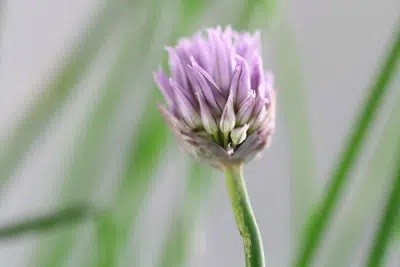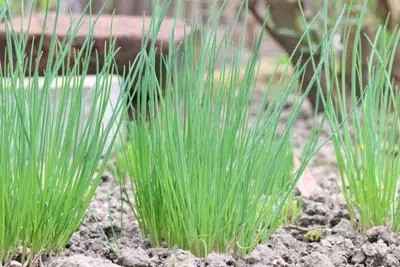Typical of chives (Allium schoenoprasum) also known as rush or grass leek, are its slender, tubular and smooth stalks, up to 30 cm high, which have similarities with the rush. Fresh, chives can develop their aroma best and contain particularly high levels of vitamin C. But what if the leek blooms, is it still edible or perhaps even poisonous?
Chives come in different varieties, which differ in the thickness of their stalks, flower color and taste. Depending on the variety, the culms are fine, medium or coarse. The globular inflorescences can be white, intense pink or purple, and the flavor ranges from rather mild to pungent.
Contents
What if the chives bloom?
Flower buds form at the ends of the stalks. Once they are open, it is basically still edible, but much firmer and woodier and also much more bitter than before flowering. Many even find it inedible.
This is because the plant now puts more energy into flower and seed formation than into the stems. The flowering practically affects their taste. It has no effect on the other non-flowering stalks. It is best to use only flowerless stems and from the woody, only the flowers.
Tip: Many people believe that the flowers of chives are poisonous. But this is not the case, on the contrary, they are tasty and versatile
Edible parts

Chives belong to the same plant family as onions, leeks and co., which is noticeable in taste and aroma. Yet not only juicy the stalks are edible.
- Stalks, flower and buds edible
- Stalks smell strongly of onion, but are milder
- Depending on the variety, a delicate or spicy-fresh aroma
- The older the stalks, the sharper they become
- Flowers are also rich in vitamins
- Taste lighter and more delicate than leeks
- Combination of light sweetness and spicy pungency
The flower surpasses the stalks many times over in terms of pungency and spiciness. Their aroma is most intense when harvested early in the morning. The buds are pickled, a good substitute for capers.
Harvest and flowering time
Harvest time for Allium schoenoprasum is basically all year round, but best before flowering, because once the flowers are there, the aroma of the leek suffers. The time of day also affects the aroma.
- Best time of day to harvest, in the early morning hours.
- Aroma and content of essential oils, then the highest
- Cut stalks two to three inches above the ground
- Cut off split shoots, above the branching point
- Both stalks are thus preserved
- Leeks bloom from late April to early June
- Harvest time preferably before seed formation
- Do not cut indiscriminately, but thin out the horst
- Chives should not be left unharvested for long
Best time to harvest the flowers is also preferably in the morning. They taste best when freshly bloomed. If they have already set seed, the taste diminishes. They can be eaten raw, cooked or used as edible decorations. Before eating, shake possible insects out of the flowers or place in cold water briefly.
Is it possible to avoid the formation of flowers?
Solid and woody stems can be avoided by preventing the formation of flowers. This can be done by cutting back the stalks regularly and not leaving them unharvested for a long time. You harvest them before they can come into bloom. With regular pruning, it is important to pay attention to appropriate fertilization, because chives are what is known as a heavy grower. If the harvest is particularly abundant, the leeks can be preserved without any problems.
Shelf life of fresh chives

Chives (Allium schoenoprasum), like most herbs and vegetables, are best used fresh. However, they do not keep as long when fresh, usually only a few days. You can wrap it by the bunch in damp kitchen paper, place it in lockable containers, and then store it in the vegetable drawer of the refrigerator. Packed this way, the leeks will keep for about five to ten days. Or place it in a glass of water, although the stalks will turn yellow fairly quickly with this method.
Preserve for longer storage
Freeze
Freezing is a good way to preserve these leeks for a longer period of time. After washing the stalks and dabbing them dry with kitchen paper, cut them into ready-to-use small rolls with sharp scissors. Then put the chopped stalks into freezer bags or ice cube trays with a little water and put the whole thing in the freezer. Chives can be kept frozen for up to ten months without losing much of their flavor.
Pickling
An alternative to freezing is pickling in salt, vinegar or oil. Pickled in salt, it can be used to make a delicious herb salt. You can make your own creations with different herbs, e.g. parsley, basil, dill or tarragon. Another possibility is the pickling in oil or vinegar in combination with different spices, depending on personal taste. When doing this, make sure that the herb is always completely covered with oil or vinegar. Chive vinegar can be stored in the refrigerator and chive oil in a dry and dark place.
Tip: Drying as a method of preservation is not suitable for chives. After that, it would resemble dried hay rather than leeks}.


